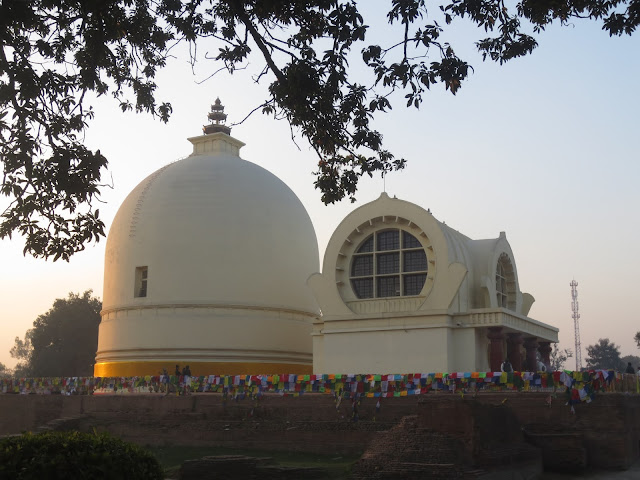Borobudur (Indonesia)
From my diary (March 2010)
Yogyakarta, Java, probably the most interesting city in Indonesia. I arrive after a long and tiring journey (lasting 11 hours) by van from Bromolingo, East Java, where I had stopped to ascend to the top of Mount Bromo volcano, one of the 127 active volcanoes in Indonesia. I travelled with Justin, a French backpacker on my bus from Bali, and it is with him and a few other young travelers – two Dutch girls who had climbed Mount Bromo with us, and two of their friends – that I visit Borobudur. We rent three motorbikes to cover the 42 kilometres between Yogyakarta and the site of what is one of the most sensational historical Buddhist remains in the world. I will be riding a motorbike with Sanne, one of the two Dutch girls, while Justin will be on a second motorbike with the other.
It’s
nine in the morning when we leave Yogyakarta and it takes us about an hour and
a half to reach the park that has been laid out around the knoll on which this
monument in honour of the Buddha was raised almost one thousand and two hundred
years ago. Basically, all of Southeast Asia was strongly influenced,
historically, by Indian culture before the arrival of Islam around the 12th–13th
century. As there are six of us, hiring a guide will cost us a song, so we
decide to get one: an amiable and knowledgeable gentleman, a Muslim with expert
knowledge of – and a keen interest in –Buddhism.
Buying the entrance ticket, we enter
the park and immediately discern the outline of the prodigious monument
emerging from behind the trees.
The emotions are strong.
The central structure at Borobudur
looks like a big pyramid, but is actually the crown of an enormous stupa. In the lower part, there are four square bases which become
increasingly smaller as one climbs the monument; in the upper part, there are
three round ones; and at the top sits an actual stupa...
 |
| Borobudur |
 |
On the square bases |
 |
On the top |







Comments
Post a Comment